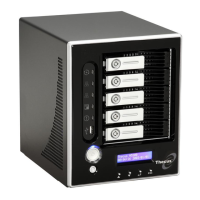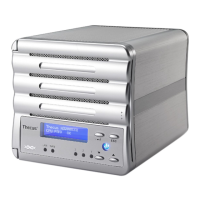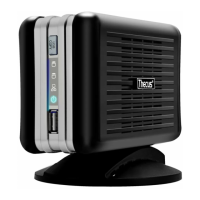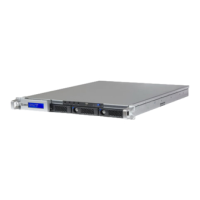RAID 5
RAID 5 offers data security and it is best suited for networks that perform many
small I/O transactions at the same time, as well as applications that require data
security such as office automation and online customer service. Use it also for
applications with high read requests but low write requests.
RAID 5 includes disk striping at the byte level and parity information is written to
several hard disk drives. If a hard disk fails the system uses parity stored on each of
the other hard disks to recreate all missing information.
RAID 6
RAID 6 is essentially an extension of RAID level 5 which allows for additional fault
tolerance by using a second independent distributed parity scheme (dual parity)
Data is striped on a block level across a set of drives, just like in RAID 5, and a
second set of parity is calculated and written across all the drives; RAID 6 provides
for an extremely high data fault tolerance and can sustain two simultaneous drive
failures.
This is a perfect solution for mission critical applications.
RAID 10
RAID 10 is implemented as a striped array whose segments are RAID 1 arrays. RAID
10 has the same fault tolerance as RAID level 1.
RAID 10 has the same overhead for fault-tolerance as mirroring alone. High I/O
rates are achieved by striping RAID 1 segments.
Under certain circumstances, RAID 10 array can sustain up to 2 simultaneous drive
failures
Excellent solution for applications that would have otherwise gone with RAID 1 but
need an additional performance boost.
JBOD
Although a concatenation of disks (also called JBOD, or "Just a Bunch of Disks") is
not one of the numbered RAID levels, it is a popular method for combining multiple
physical disk drives into a single virtual one. As the name implies, disks are merely
concatenated together, end to beginning, so they appear to be a single large disk.
As the data on JBOD is not protected, one drive failure could result total data loss.
Stripe Size
The length of the data segments being written across multiple hard disks. Data is
written in stripes across the multiple hard disks of a RAID. Since multiple disks are
accessed at the same time, disk striping enhances performance. The stripes can
vary in size.
138
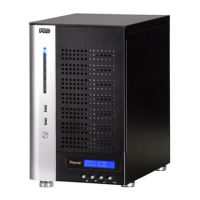
